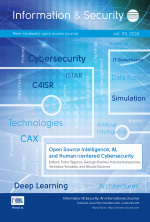A Governance Model for an EU Cyber Security Collaborative Network – ECSCON
Source:
Information & Security: An International Journal,Keywords:
Collaborative Network Organization, Cyber security community, governance, innovation management, Virtual Breeding EnvironmentAbstract:
This white paper on governance of European Cyber Security Collaborative Network (ECSCON) is proposed as a joint effort between the four pilot projects ECHO, SPARTA, CONCORDIA and CyberSec4Europe to identify the "umbrella" model for effective and efficient coordination of the development of the European cyber security competence community in the institutional framework established by a European cybersecurity hub with a network of cybersecurity competence centres and in relation to EC, EUMS, ENISA, EDA, EURОPOL, and the NATO Cyber Organization. The white paper combines findings from bottom-up research in CyberSec4Europe and SPARTA with the top-down approach implemented by ECHO and will seek further cooperation with ECSO and Cyber Atlas to achieve a common proposal to the EC and offer to the European cyber security competence community to be self-organized on regional and functional principle. The proposed governance model defines the CNO as a Virtual organisations Breeding Environment to support the establishment of service groups to address specific demand, maintaining a regional (chapter based) organization of the community with a central hub dealing with EC and chapters dealing with the hub and national coordination centres in the respective member-states.
